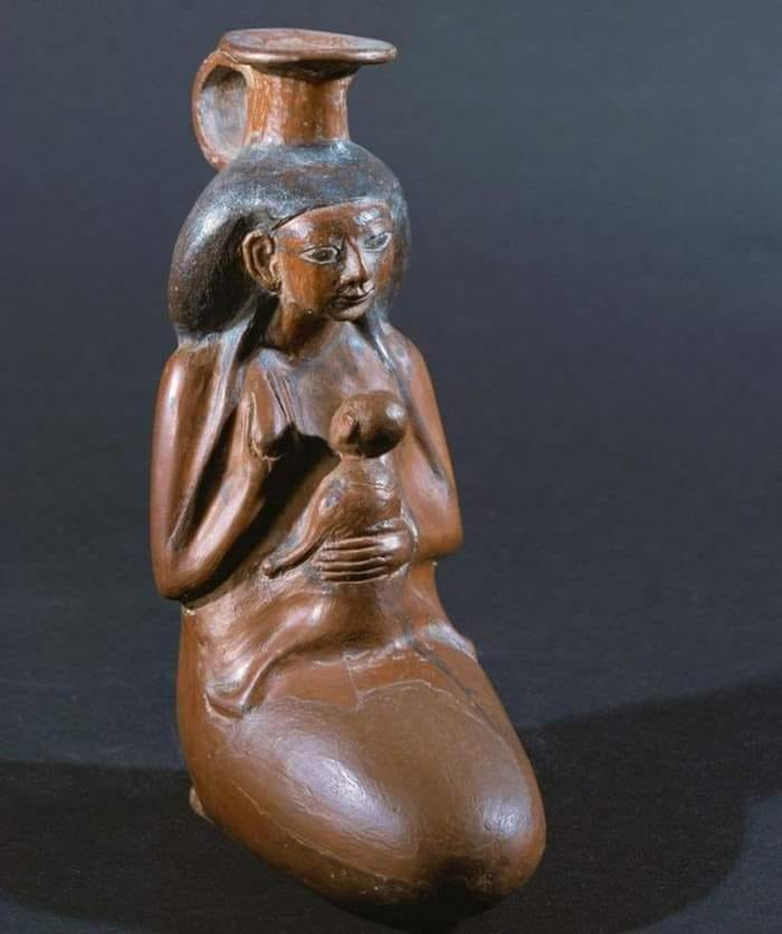A polished pottery vessel for storing liquids

The first bottle in history was Egyptian, a polished pottery vessel for storing liquids, perhaps milk or aromatic oils, designed in the shape of a woman carrying her infant child. Land of art and creativity throughout time.
Pottery is one of the oldest crafts known to man, and pottery is anything made from clay. There are two types of clay, stone clay. The first is obtained from streams of valleys, rivers, and plateaus, and the second is obtained from the mountains, which is a rock that is ground to become kneaded. Both types of clay have several colors: green, white, red, black and yellow. Pottery makers usually differentiate between clay and stony clay in that the former is fired at a temperature between 950 degrees Celsius and 1150 degrees Celsius, and the second is fired at a temperature between 1200 degrees and above. (For the rest of the discussion) porous and non-porous pottery is made from it in several colors. And shapes. What helped in the invention of pottery was the slow wheel, then the fast wheel, which revolutionized the amount of production in the fourth millennium BC. The pottery was dried in the air and the sun and then burned in a controlled, ventilated way to give a red or black color depending on the metal oxides present in the clay material. It was decorated and polished before or after burning. They are colored with metal oxides. The centers of pottery making in East Asia were in China, Japan, and Korea until the end of the second millennium BC. He gave me a book about the museum, and Japan is the country that increased the pottery industry, especially in the year 1265 AD.
The Chinese made pottery into their own hands. They remained from 206 BC until 220 AD. They make small statues, pottery items, even stoves. In the year 220 AD, Chinese ceramics appeared and were exported to India and the Middle East. It had distinctive drawings on it.
Source: websites

